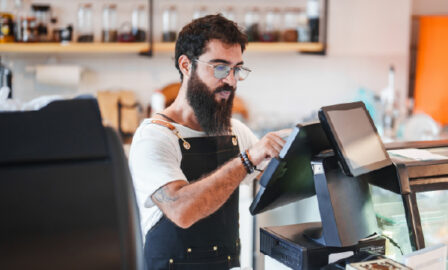2021 Footwear and Apparel Trends
Read our updated trends report here: 2023 Apparel Industry Trends
It’s no secret that the footwear and apparel industry are being heavily impacted by COVID-19, and the trends for 2021 readily reflect that. As stores closed and shoppers turned to online, businesses across multiple industries were forced to rapidly evolve. As we approach 2021, businesses much prepare to grow and adapt in order to compete in this quickly evolving COVID-19 world.
Download the Full 2021 Footwear and Apparel Trends Here
2021 Footwear and Apparel Trends
TREND #1: Omnichannel Strategies are a Must After Living in a Virtual World
The novel coronavirus pandemic has led to the temporary or permanent closure of many brick-and-mortar stores and caused a surge in online sales. As the implementations of omnichannel strategies swells, this increase in will only continue in 2021. This also ties into the growing prevalence of businesses using DTC as a major distribution strategy and the correlating adoption of various digital technologies to promote supply chain automation. This omnichannel trend also creates an atmosphere where shoppers will feel more comfortable making online purchases than ever before, even without necessarily having the opportunity to interact physically with the apparel or footwear products prior to purchase.
Connecting customer experiences through both digital and physical platforms can provide features that drive sales and make shoppers happy. Especially considering the rise in mobile device usage for shopping, many customers would enjoy being able to conduct research and learn about products through websites or apps on their phones before making a purchase. Through omnichannel strategies, consumers are able to see which products are available in their local stores and purchase pick-up orders online, while also being able to more quickly interact with the physical products – lowering the high return rates that have developed as online shopping grows in popularity.
Fashion makes up 28% of online sales with 22% revenue growth in the last year, and apparel took 66% of share while footwear was 14% of the market.
Download the Full 2021 Footwear and Apparel Trends Here
TREND #2: Both Fast Fashion and Luxury are Accelerating Simultaneously
In 2021, the apparel and footwear industry will see a major divide through a simultaneous rise in the popularity of both fast fashion and luxury products. 50% of consumers see low pricing as relevant, while 35% appreciate luxury and premium products, demonstrating how both types of products will be a major focus in 2021.
Fast fashion has emerged as retailers desire to bring fashion trends originating from social media and fashion shows to stores in rapid time, as exemplified in the business goals of companies like Zara and H&M. Trends in 2021 may revolve around revivals and nostalgic pieces, and to best meet the need for these on-trend products and quick delivery, fast fashion companies must assess their supply chains, designers, and distributors, maximizing affordability coming from economies of scale. At the same time, they must also combat common critiques of the segment as harmful to the environment and workers.
While fast fashion seems to be increasingly popular for younger consumers, older shoppers are seeking out luxury brands. With more accessibility to e-commerce channels, customers are gaining exposure to premium products and expanding their brand awareness, which is already higher for apparel and footwear than other consumer products industries – 46% and 47% of US internet users pay attention to clothing brands and footwear brands, respectively. Especially since the global pandemic has impacted consumer behavior towards the purchase process for luxury brands, it will be important for luxury brands to continue building brand awareness in 2021, meeting increasing customer demand and better serving a growing market share.
50% of consumers see low pricing as relevant, while 35% appreciate luxury and premium products.
Download the Full 2021 Footwear and Apparel Trends Here
Subscribe to Clarkston's Insights
Contributions by Courtney Loughran.



